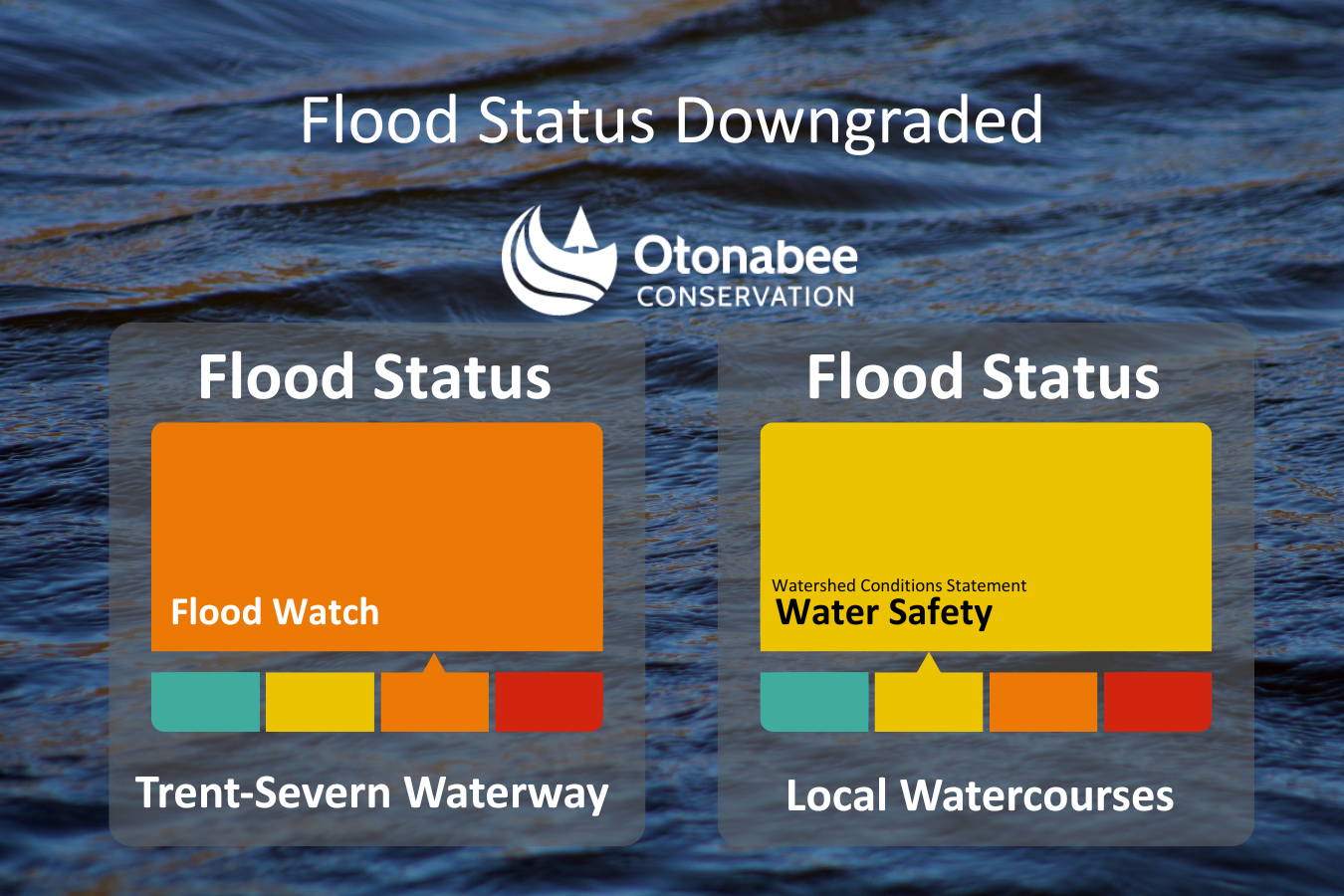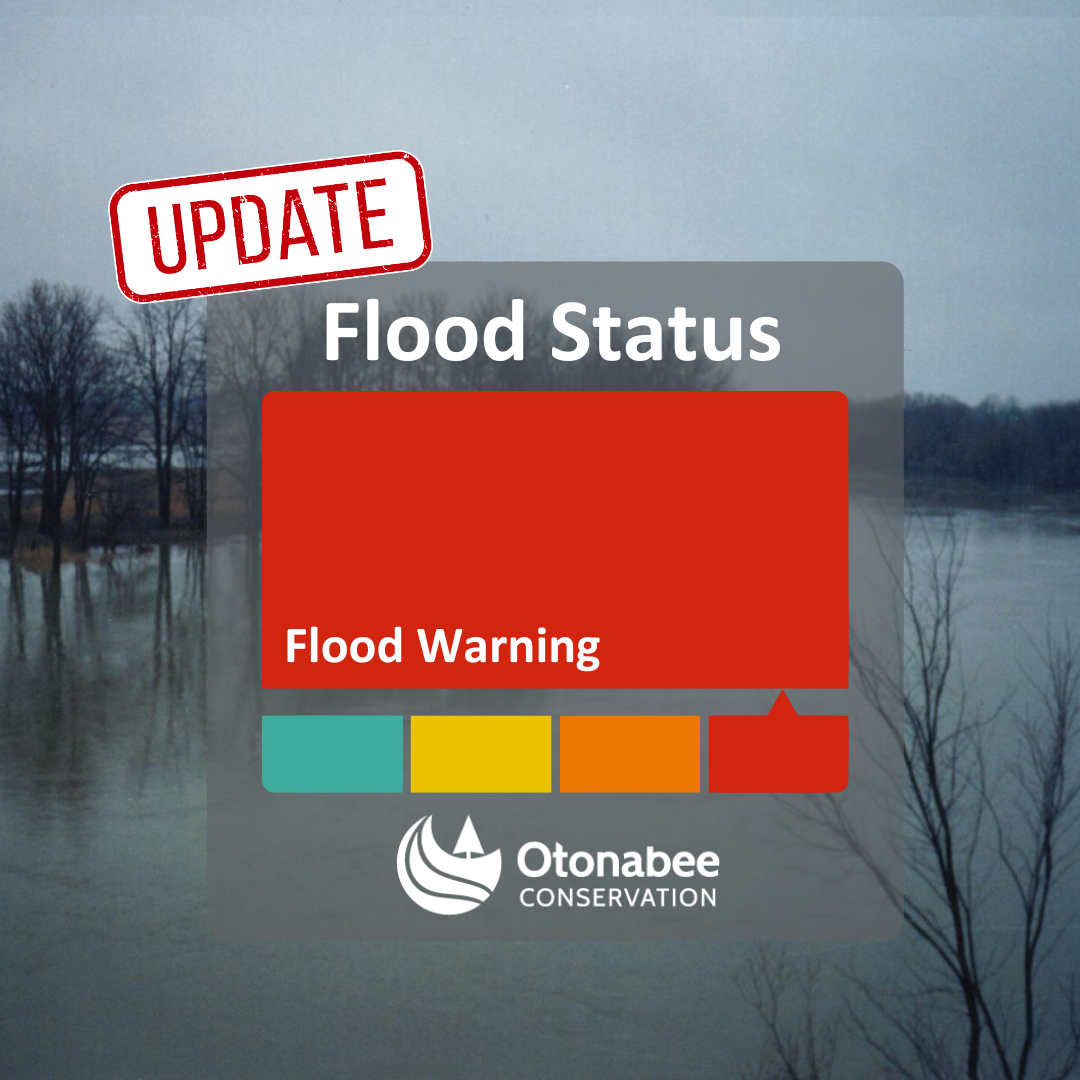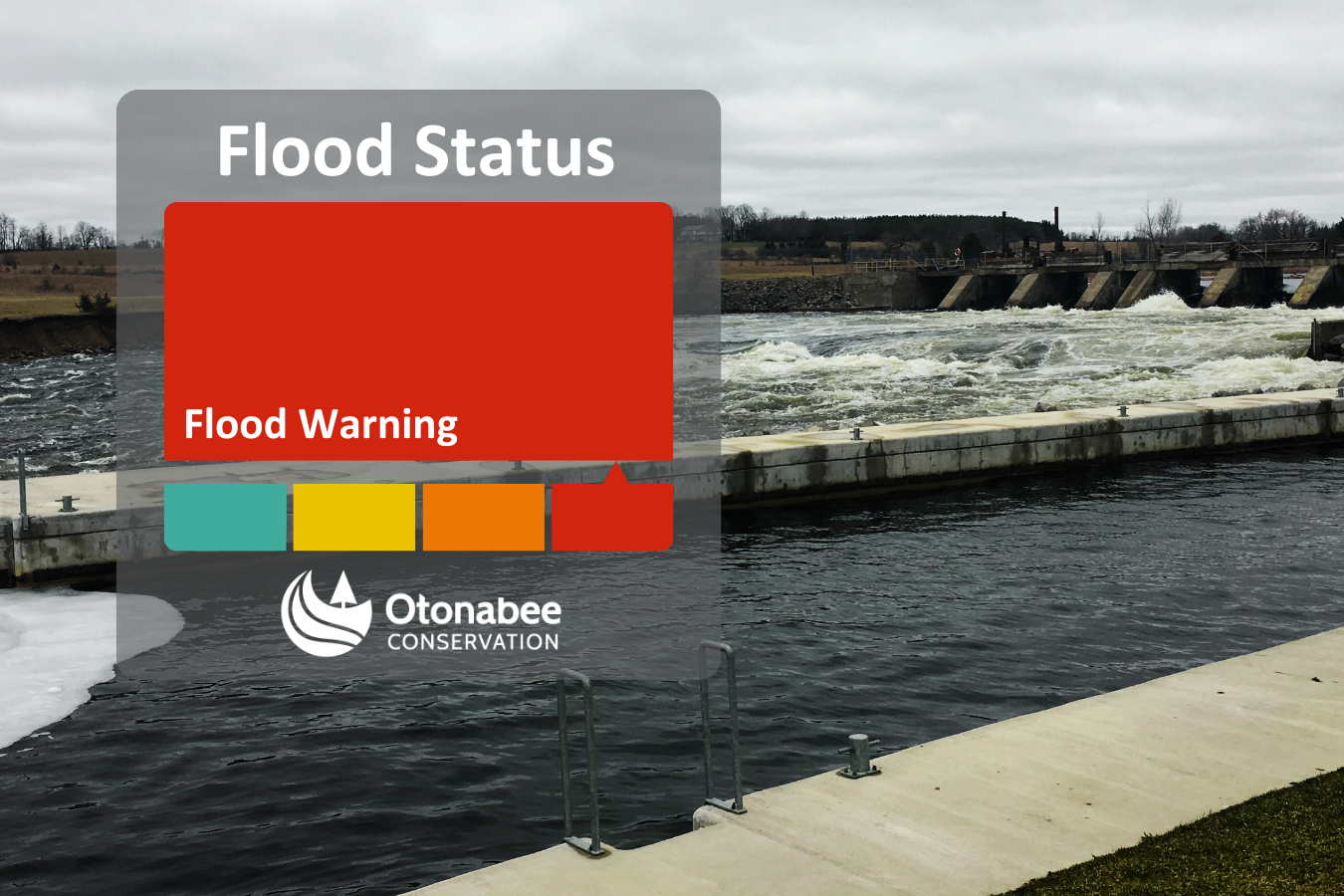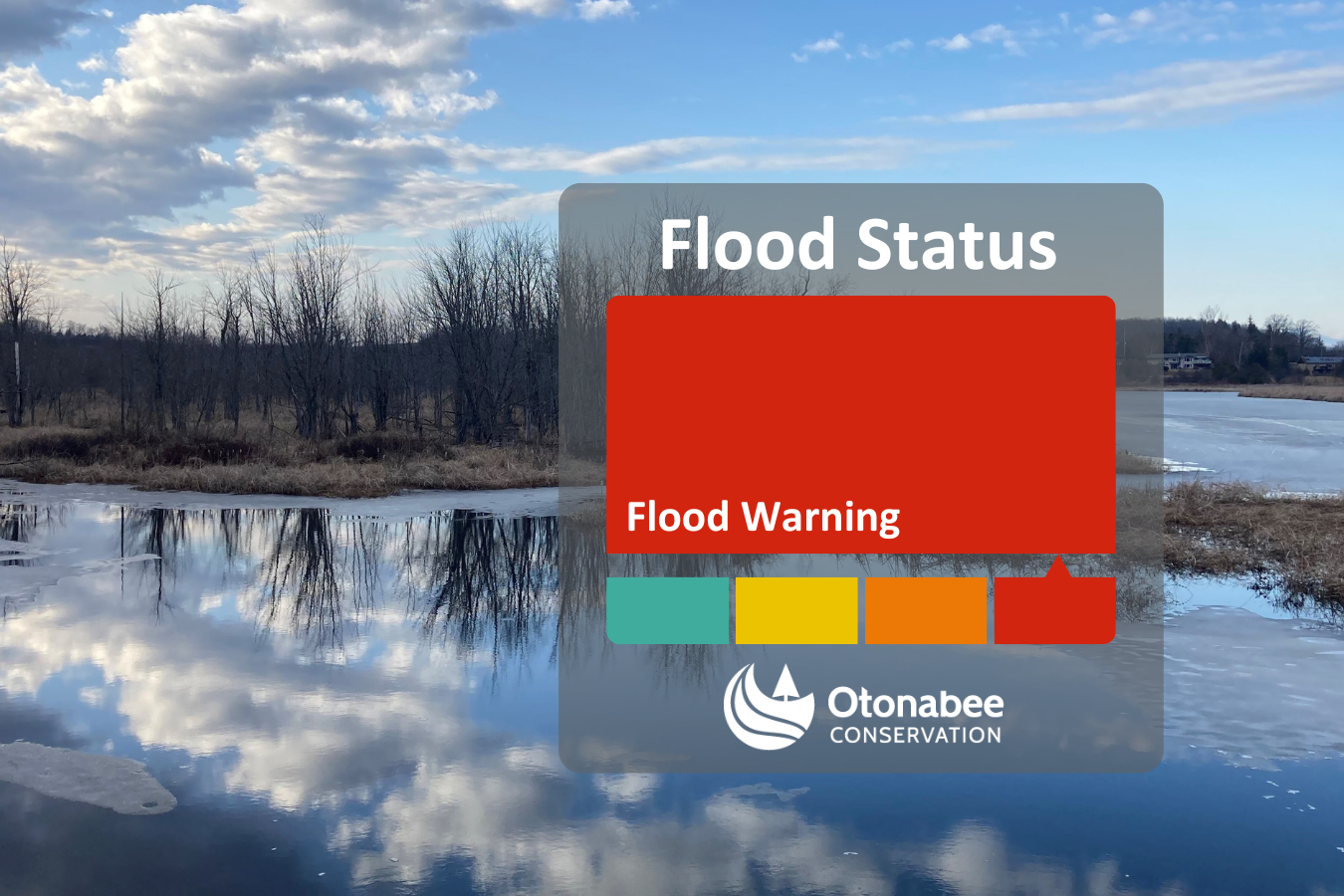Conditions are within normal limits and no flooding is expected.
Conservation Areas Closed Until Further Notice
Conservation Areas are closed for public access due to the significant ice storm of March 29, 2025.
The damage is significant across the watershed. Clean up efforts are underway however it will take some time.
Thank you for your assistance and patience.
The rivers and creeks in southern Ontario follow a typical seasonal flow pattern. During the winter, there are often brief periods of warmer temperatures. This can cause snow and ice to melt, increasing water levels and causing flooding. Rain that falls on snow or frozen ground can cause severe and widespread flooding. Melting snow and lots of rain in the spring may also cause high water levels and flooding. During the summer, localized thunderstorms are usually the cause of flooding. In the fall, intense rain from large storms is common and can also cause flooding. Remember that high water levels and flows can occur anytime of the year, so stay aware and stay safe.
Flooding can affect development near lakes, rivers, creeks, and streams. Floods are the most common and costly type of natural disaster. Removing vegetation, altering shorelines, and increasing paved areas can cause more severe flooding. Climate change can also cause extreme weather events, resulting in flooding more often.
Otonabee Conservation reduces the potential for damage and loss from flooding by:
Flood Forecasting and Warning
Our flood forecasting and warning program protects life and property from flooding. To do this, staff review available data and complete a flood risk analysis each day. If flooding is possible or expected, we issue a flood message. This information helps residents and municipalities get prepared. You can view current and past flood messages on our website and social media platforms.
We issue different types of flood messages, depending on forecasted conditions:
Conditions are within normal limits and no flooding is expected.
 |
Watershed Conditions Statement - Water Safety
High flows, unsafe banks, melting ice, or other factors could be dangerous. Flooding is not expected. Recreational users such as anglers, paddlers, hikers, and children should use caution.
 |
Watershed Condition Statement - Flood Outlook
Early notice of the potential for flooding based on weather forecast. Heavy rain, snow melt, or high winds could lead to increased runoff, ice jams, flooding, or erosion.
 |
Issued when flooding is possible in specific watercourses or municipalities. Municipalities, emergency services, and individual landowners in flood-prone areas should prepare.
 |
Issued when flooding is imminent or already occurring in specific watercourses or municipalities. Municipalities and individuals should take actions which may include road closures and evacuations.
 |
Preparing for Flooding
If you experience a flood emergency, dial 911 immediately!
To learn more about how you can be prepared for flooding, check out the following resources.
Monitoring Water Levels, Flow, Precipitation and Climate
Our monitoring network collects information about precipitation, water levels, and water flow. We also gather information climate information including air temperature, soil temperature, and soil moisture. We use this data for our Flood Forecasting and Warning and Low Water Response Programs. Use our interactive map to view precipitation and water levels.
Our monitoring network includes:
We also have access to other monitoring networks in our watershed region including:
Contact Us
250 Milroy Drive
Peterborough, ON K9H 7M9
Voice: 705-745-5791
Fax: 705-745-7488
Email: otonabeeca@otonabeeconservation.com

The Flood Warning that has been in effect for the Trent-Severn Waterway has been downgraded to a Flood Watch.

Flooding of low-lying, flood-prone areas along the Trent-Severn Waterway is expected to worsen over the next 48 hours as water level and flows continue to rise.

Flooding in low lying, flood-prone areas will worsen over the coming days along the Trent-Severn Waterway (Kawartha Lakes, Otonabee River and Rice Lake) and local watercourses, including the Ouse River, Indian River and tributaries to the Otonabee River. These areas are experiencing extremely hazardous water levels and flows.

Flooding in low lying and flood-prone areas continues along the Trent Severn Waterway and local watercourses, and our region is forecasted to receive heavy precipitation over the next four days.

Significant rain is expected to start Friday and continue through the weekend into Monday. This will cause flooding in low lying, flood-prone areas along the Trent-Severn Waterway and local watercourses. Flooding has started in some areas due to the recent snow melt and precipitation. The forecasted 40 to 60 mm of rain expected this weekend will further increase water levels and flow.
Subscribe to our News
Stay up to date on Otonabee Conservation's activities, events, programs and operations by subscribing to our News.
This website uses cookies to enhance usability and provide you with a more personal experience. By using this website, you agree to our use of cookies as explained in our Privacy Policy.